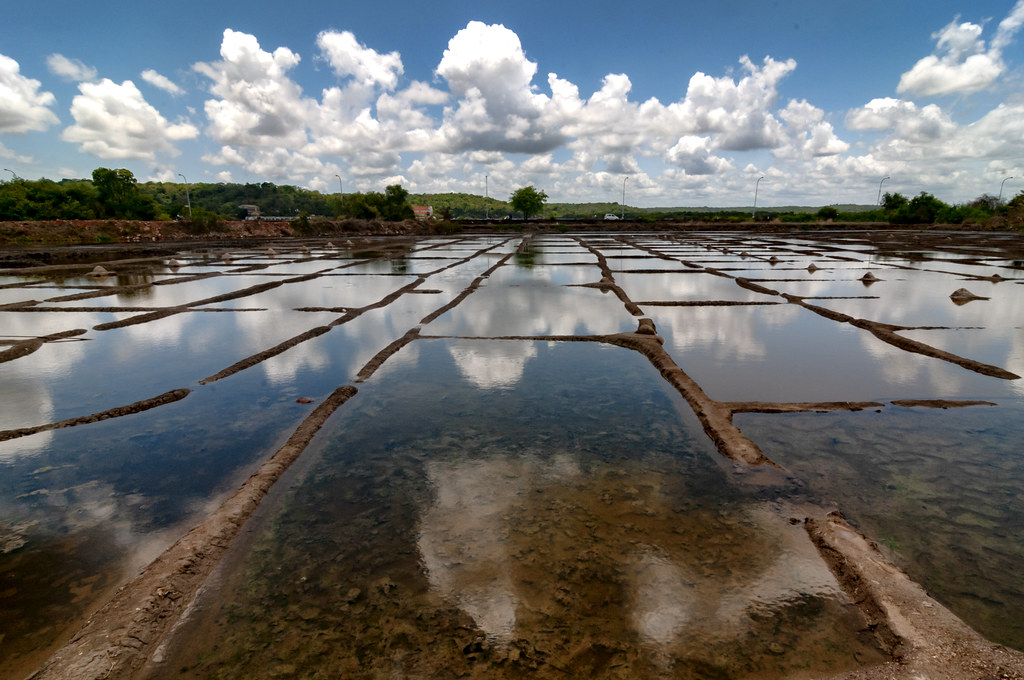
Sea salt pans goa hires stock photography and images Alamy
Salt harvesting in Ribandar, Goa , India.Go check out my other video about a traditional Goan bakery:https://www.youtube.com/watch?v=24VnoBqVzDEGo follow me.
Salt pans were a common sight in the past but there are still some areas of Goa that these can
Goa's oldest traditional occupation is under threat. Goans no longer work in salt pans. Today most of the salt pans which are surviving in the state are run.

Salt of the earth — Whetstone Magazine
Salt pans in Goa experience three main phases. This includes the ceased phase: during monsoon period of June to October, the Preparatory phase from December to January and the salt harvesting phase, from February to June. After the monsoons, the salt pans are prepared manually for salt production.

Salt Pans of Goa Soul Travelling
For centuries, the salt pans of Goa (mitache agor) have produced solar salt or gaunthi mith. An essential commodity for any civilization, salt has innumerable uses. Gaunthi mith, in particular, is weaved into Goan cuisine, its economy, society and culture in unique ways.

Ribandar (Goa) Salt pan
Salt Pans of Goa 2 Hours 30 Minutes Patto Centre, Goa Enquire now ₹ 499 Free date change No Booking Fees Instant Confirmation Home Walking Trails Salt Pans of Goa Overview Trail Overview There is more to Goa than the golden dunes we wish to flock at to dip our feet in the cool waters of the sea.

Salt pans at Arpora, Goa, India Stock Photo Alamy
Salt pans in Goa experience three phases namely, the ceased phase during monsoon period of June to October, preparatory phase from December to January, and salt harvesting phase, from February.

Salt Pans of Goa Soul Travelling
Yet, for many years, salt was the livelihood and pride of Goans. An estimated 2,000 years ago, the first mithache agor (salt pan) was put into place to extract salt from Goa's sea water. The mittkaars — the community whose livelihood depended on salt — may have installed as many as 460 salt pans across 36 villages along the estuaries of.

Salt Pans of Goa Soul Travelling
In the past, there were numerous salt pans in Goa, but their numbers have dwindled, with only 8-10 salt pans remaining," Siddesh lamented. He asserted that the primary focus should be on supporting salt pan owners in maintaining their salt pans. Labour is also scarce, as workers endure scorching heat during the salt production season, which.

Salt Pans of Goa Soul Travelling
Abstract. In Goa, salt production from the local salt pans is an age-old practice. These salt pans harbor a rich diversity of halophilic microbes with immense biotechnological applications, as.

Goa Summer, Salt Pans In Goa, during the months of summer,… Flickr
27 Citations 15 Altmetric Metrics Abstract Traditional salt farming in Goa, India has been practised for the past 1,500 years by a few communities. Goa's riverine estuaries, easy access to sea water and favourable climatic conditions makes salt production attractive during summer.

Salt Pans or Salt Evaporation Pond, Ribandar Goa. Stock Photo Image of rajasthan, farm 125434314
Salt pans form a unique ecosystem where succession of different organisms with varying environmental conditions occurs. Organisms ranging from bacteria, archaea to fungi, algae, etc., are known to colonise salt pans and may influence the quality of salt produced.

Salt Pans in Goa in the Monsoons Goa is more known for its… Flickr
Salt harvesting is a labour intensive process that demands an understanding of the ecology. In Goa, salt and salt pans are part of an age-old network of reclaimed wetlands called khazans. According to experts, the khazan system is unique to Goa and is around 3,500 years old.

The Salt Pans of Goa The Juggernaut
A flashback The 150-decade old practise of traditional salt farming, which yields common salt or halite rock salt as a final product, is traditional business of Mithgaudas, Gauddos, Bhandari, Agris and Agers communities of Goa.

A visit to the salt pans of Goa YouTube
from salt pans in Goa, India mani arora 2016 A new species of Tetraselmis, T. indica Arora & Anil, was isolated from nanoplankton collected from salt pans in Goa (India) and is described based on morphological, ultrastructural, 18S rRNA gene sequence, and genome size data.

Uday at the Salt Pan in Panjim, Goa, India It is peak summ… Flickr
Salt pans in Goa experience three phases namely, the ceased phase during monsoon period of June to October, preparatory phase from December to January, and salt harvesting phase, from February to June. After the monsoons, the salt pans are prepared manually for salt production. During high tide, an influx of sea water occurs, which enters the.

Heaps Of Salt Structure And Salt Being Processed In A Salt Pan In Goa India Stock Photo
Salt, a natural preservative, allowed farmers, fishermen, and hunters to store excess food for future use. It was a crucial technology for developing civilizations. In Goa, solar salt making as a community tradition dates back 1,500 years, and little in the methodology has changed since then. The salt pans, also called salterns, resemble a.